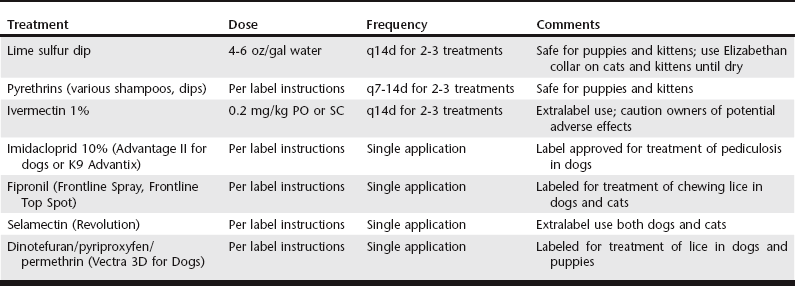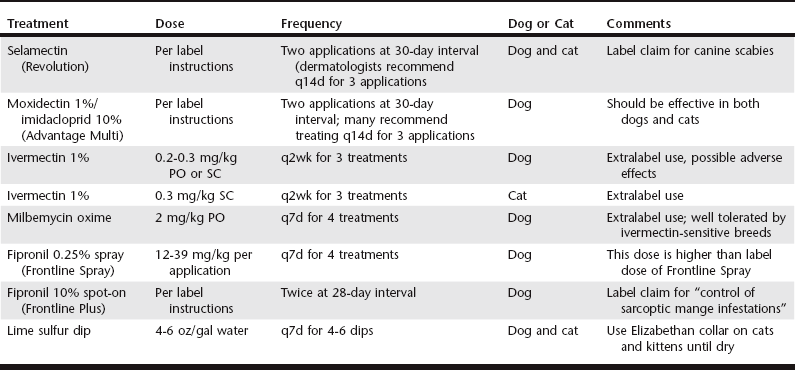Chapter 98 Diagnosis and management of ectoparasitoses is a common part of small animal practice. This chapter discusses the clinical aspects and treatment of several less common ectoparasites. Chapter 97 considers flea control. Lice species are divided into two orders, the Mallophaga or biting lice, and the Anoplura or sucking lice (Table 98-1). Lice are obligate parasites, completing the entire life cycle on one host in 3 to 5 weeks. Lice are transmitted from host to host primarily by direct contact. However, infestation by contact with infested bedding or grooming tools also can occur. TABLE 98-1 Lice Species Affecting Dogs and Cats Table 98-2 lists the various treatment options for pediculosis in dogs and cats. Pruritus may persist for 2 to 4 weeks after treatment. Environmental treatment usually is not required because lice do not survive off the host; however, thorough cleansing of bedding and grooming tools is recommended. Treatment of contact animals is recommended since some may be asymptomatic carriers. Lice are species specific and do not present a significant zoonotic risk to owners. In the author’s experience, systemic treatments are generally safe, highly effective, and easier for owners to administer than topical treatments. Only selamectin has a label claim for the treatment of sarcoptic mange in the dog. See Table 98-3 for treatment options for canine scabies.
Treatment of Ectoparasitoses
Lice Infestation (Pediculosis)
Species
Classification
Hosts
Linognathus setosus
Anoplura (sucking)
Dogs
Trichodectes canis
Mallophaga (biting)
Dogs, wolves, foxes, other canids
Heterodoxus spiniger
Mallophaga (biting)
Dogs
Felicola subrostratus
Mallophaga (biting)
Cats
Treatment
Canine Scabies
Treatment
< div class='tao-gold-member'>
![]()
Stay updated, free articles. Join our Telegram channel

Full access? Get Clinical Tree


Treatment of Ectoparasitoses
Only gold members can continue reading. Log In or Register to continue


